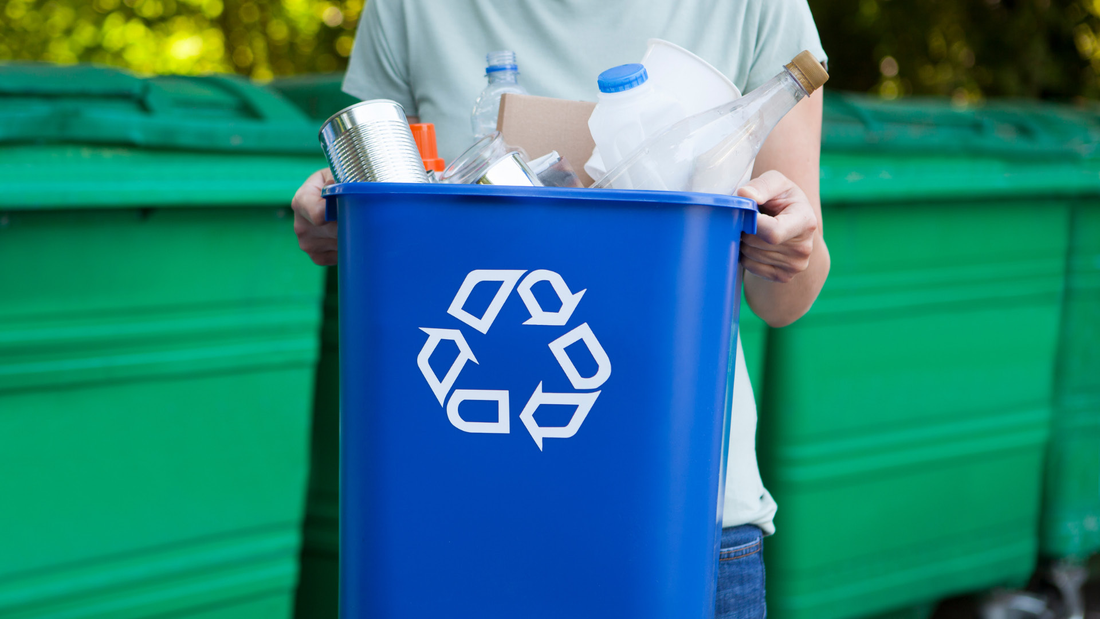
Turning Trash into Treasure
BreathShare
As we strive for more healthy and eco-conscious lifestyles we must remember how important the little everyday tasks we do can truly make a difference when done collectively. Let’s start with the basics: recycling. As we know, recycling is one of the first steps to a cleaner world, however knowing exactly what can and can’t be recycled can sometimes be a little bit confusing. Today we’ll break down the basics of what should be recycled, and what is better off in the trash. All information and additional information can be found on the United States Environmental Protection Agency’s website.
Paper and Cardboard
Paper makes up 23% of trash generated each year, which is more than any other material. Recovered paper is used to make new paper products, which saves trees and other natural resources, creating that renewing cycle.
Yes:
-
Newspapers
-
Magazines
-
Pizza boxes (Yes! Even if they have grease on them, just make sure to remove food scraps and flatten it before being tossed)
-
Envelopes (even those with plastic windows)
-
Paper and cardboard takeout containers (depending on how much food is still on them, try rinsing or scraping residue off)
-
Cardboard containers and boxes (flattened)
Maybes:
-
Shredded paper (depends on your local recycling program)
-
Gift wrap (gift wrap with shiny or laminated coating cannot be recycled, instead opt for a type that can be recycled or is made from recycled materials)
Plastics
Of all the plastic we make, about 72% of it ends up in landfills or pollutes the environment. Only 9% of all plastic ever produced has been recycled, and only 19% incinerated. Because some plastics are not accepted in certain community recycling programs, check with your local program and when possible, opt for products made from recycled plastic materials.
Yes:
-
Plastic bottles (usually caps and labels as well)
-
Containers and cups (without food and depending on what kind of plastic they are made of- check the chart below)
Not Curbside
-
Plastic bags (check retail and grocery stores to see if they accept these materials for recycling)
-
Styrofoam (check where you can drop off your styrofoam to be recycled)
No:
-
Plastic utensils
- Compostable plastic (when placed with non-compostable plastics they can disrupt the recycling stream)
The chart below lists the different symbols found on plastic containers and what kind of plastic they represent. Check with your community to see which of these plastics they recycle.

Glass
Glass, especially food and beverage containers, is special in that it can be recycled over and over again.
Yes:
- Most curbside programs accept all glass colors which are later separated at the facilities
No:
- Broken shards of glass (as they can harm workers).
Aluminum
Aluminum, much like glass, is one of the most recycled and recyclable materials in use today. The process can happen almost infinitely and making recycled aluminum only uses about 5% of the energy needed to make new aluminum. As a result, nearly 75% of all aluminum ever produced is still in use today!
Yes:
-
Aluminum cans (avoid crushing the cans as they are harder to detect when being sorted)
-
Aluminum foil (as always, remove any food residue on them)
Batteries
The landscape of options for battery recycling has evolved significantly as the metals found in most batteries are simpler to recycle. Batteries, however, can be harmful when tossed out in curbside bins, therefore a growing number of municipalities provide designated drop-off sites for battery recycling. Check out Earth911 and GreenCitizen to see where your nearest recycling facilities are.
Look for Designated Recycling Locations
-
Dry-Cell Batteries
-
Lithium-ion Batteries
-
Lithium Metal Batteries
-
Lead-Acid Batteries
-
Other Rechargeable Batteries
Electronics
Electronics cannot be recycled curbside, however they too can be dropped off at specific collection sites. Many manufacturers offer several options to donate or recycle electronics through their programs, and the EPA has a list at: Manufacturers and Retailers.
Food
Because food cannot be recycled, the general rule for reducing food waste is to buy only what you need, eat leftovers, and when all else fails, compost if possible.
Lawn Materials
- Like food, lawn materials cannot be recycled but they can too be composted or picked up by a yard trimming collection service near you.
- Miscellaneous Items
No:
-
Paint
-
Barometers and thermometers
-
Burnt-out lightbulbs
-
Used motor oil (this is especially dangerous to discard improperly as it can contaminate water sources and effect ecosystems)
Clothing
Gently worn clothing and shoes can be and should be donated to local charities or second hand stores. Another great alternative for your shirts and fabric scraps, especially those that are 100% cotton, is to send them to a t shirt specific recycling program like our partner, Recover Brands. Recover takes your old shirts and creates new clothing by using recycled fabric, 75% recycled water and 68% less carbon emissions. We are proud to have our products made sustainably and ethically through these methods as we continue to close the fashion loop and live our greenest lives!
Thank you for reading,
Breath